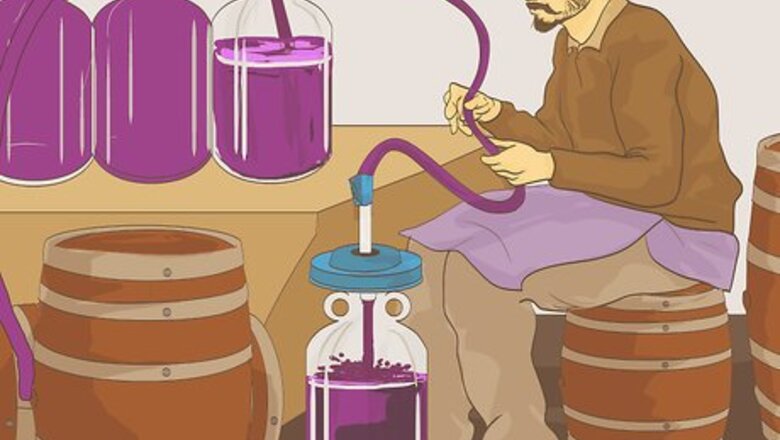
views
X
Research source
Using Gravity Flow Filtration
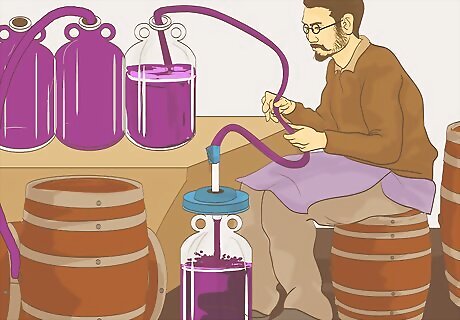
Obtain a gravity flow filter. This method of filtering is the cheapest of all the filtration methods. It works by connecting the filter body, containing a filter pad, with a siphon tube. The siphon tube pushes the wine through the filter. This is the cheapest method, but it is also the slowest. The slowness of this process also causes the filter pads to collect yeast and other particles from the wine.
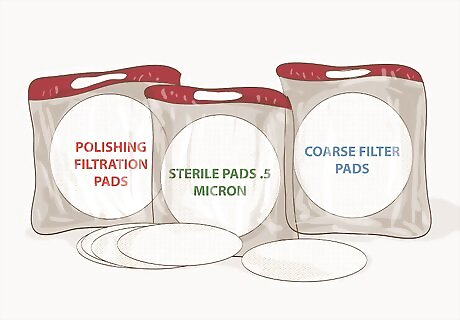
Buy extra filtration pads. The wine is forced through the filter pads. There are three different grades of filter pads. Coarse filter pad. This type of pad adds polish to the wine without losing body or color. Polish/medium filter pads. This is the type of pad that winemakers most commonly use. It adds polish to wine without removing too much body or color. Sterile/fine pads. This type of pad should be used last after the other two pads. The greatest amount of yeast is removed with this pad. It also helps remove the effects of oxidation in your wine.
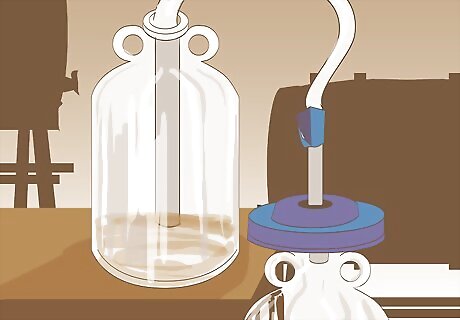
Affix the filter pad to the intake tube. Make sure to affix any other attachments to the intake siphon tube. Position this below the barrel or storage unit.
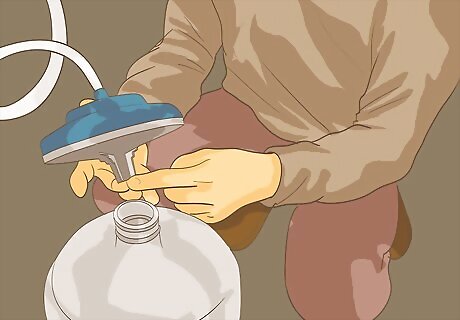
Attach the outtake tube. Fasten the outtake siphon tube to the release on the barrel or storage unit. Prepare a bottle for the wine to flow into at the other end of the filter pad. Make sure that the system is hooked up properly, and the filtration plates are set up right to prevent leakage. Complete any steps in the winemaking process, except cold stabilization, before filtering. Your wine should be in the barrel or storage unit and ready to be bottled prior to beginning gravity flow filtration. Sterilize your filtration system before using.
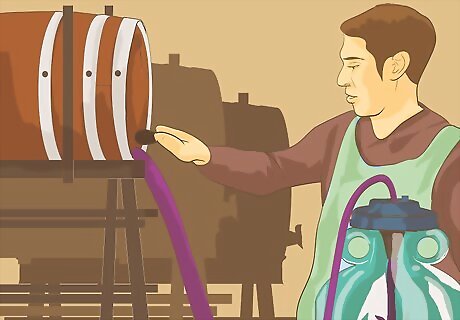
Open the release on the barrel or storage unit. Wine should begin to flow towards the filter pad where it will slow down and trickle through to the bottle.
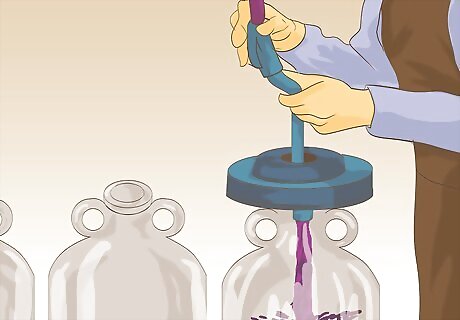
Replace the bottle with an empty one as it fills. This method is best if you are dealing with one or two gallons of wine at a time. Allow 45 minutes to an hour to filter one gallon of wine.
Observe the buildup of particles on the filter pad. This type of system produces a coarser filtration. For a finer filtration, you will need a mechanical filtration system. As wine begins to get stopped up behind the pad, tilt the siphon tube back toward the barrel or storage unit, remove the filter pad, and replace it with a new one.
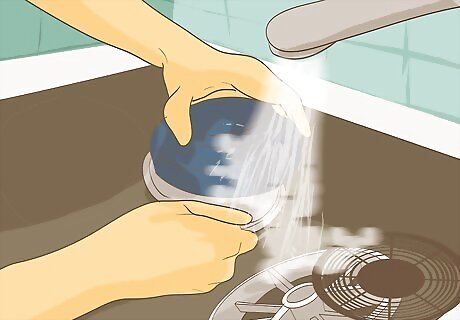
Clean the filtration system. Use water and sulfite solution. Rinse thoroughly with water.
Filtering with a Hand Pump System
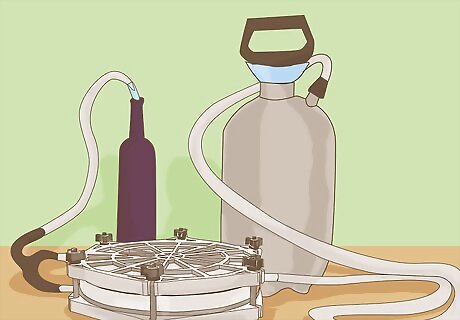
Purchase a hand pump system. This system requires two people to operate. One person is needed to steady and pump, and the other person is needed to switch bottles. It works by pumping the system to push the wine through the tubing to the filtration system. This method is faster than using a gravity filtration system.
Buy extra filtration pads. The wine is forced through the filter pads. There are three different grades of filter pads. Coarse filter pad. A coarse pad adds polish to the wine without losing body or color. Polish/medium filter pads. This is the type of pad used by winemakers. It adds polish to wine without removing too much body or color. Sterile/fine pads. Use this pad last. 80% of yeast is removed with this pad. A fine pad also removes the effects of oxidation in your wine.
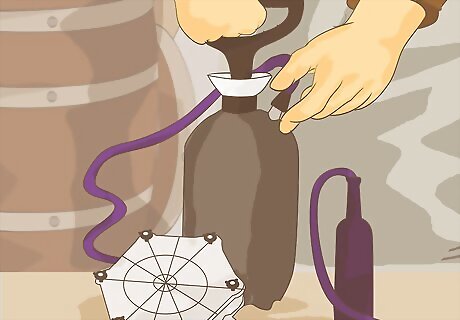
Connect the outtake tube pump to the barrel or storage. Affix the outtake siphon tube to an empty bottle. Open the release on the barrel or storage unit. Make sure to sterilize your equipment before using. Have one person operate the pump while another steadies the tube on the bottle, switching out bottles as necessary.
Observe the build-up of particles on the filter pad. As wine begins to get stopped up behind the pad, cease pumping and replace the pad with a new one.
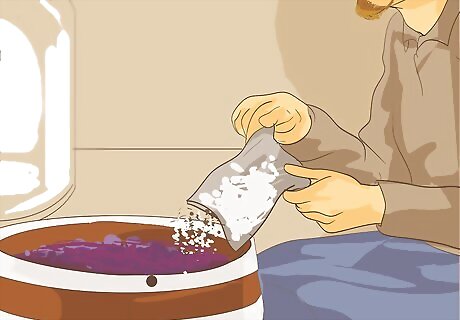
Purchase filtration powder. Apply the process of powder filtration by adding the powder to the wine in small doses. Continue to add powder in small amounts to the wine as you push it through the filtration system. Powder filtration works by forming a cake along the filter pad with the filtration powder, allowing the pad to filter out very fine particles. Replace your filtration pad constantly. Never reuse pads.
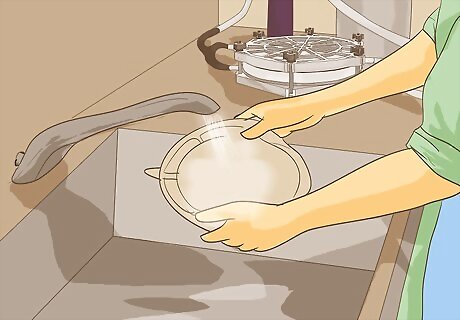
Clean your system. Clean it with water and sulfite solution. Rinse once more with water.
Working with a Powered Pump Filtration System
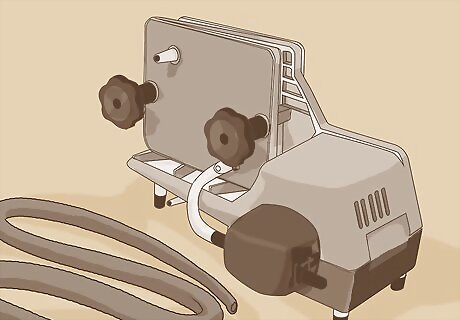
Buy any type of powered pump filtration system. This is the fastest, most efficient, and most expensive filtration systems. It works by either by creating a vacuum that pulls the wine through the filter, or a powered mechanical pump pushes wine through the filter. This filtration system is best if you want to filter high volumes of wine. This type of system produces the finest filtration.
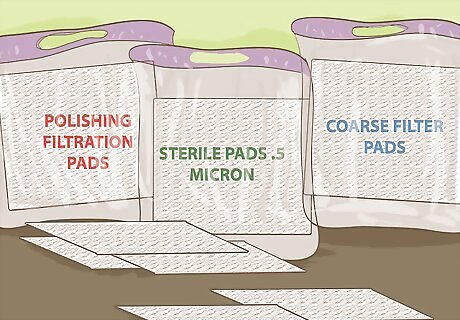
Purchase filtration pads. The wine is forced through the filter pads. The three grades of filter pads are: Coarse filter pad. A coarse pad adds polish to the wine without losing body or color. Polish/medium filter pads. This is the pad that winemakers most use. A medium pad adds polish to wine without removing too much body or color. Sterile/fine pads. This is the last type of pad you should use. The greatest amount of yeast is removed with this pad. It also helps remove the effects of oxidation in your wine.
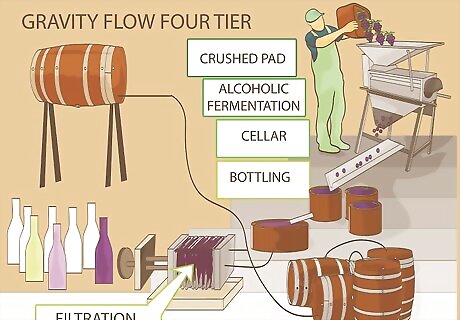
Assemble your system. Put together your system according to the instructions specific to the brand of filter you purchased. A powered pump system is the easiest type of filtration system to work. Once it’s put together, you just need to plug it in.
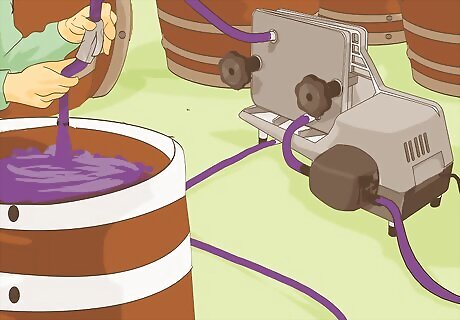
Attach the tubes to your system. Attach the intake tube to your barrel or storage unit that is already holding the wine. Attach the outtake tube to the empty storage unit. Next, all that is left to do is turn on your system. This type of system can filter one gallon per minute to one gallon per ten minutes, depending on the system.
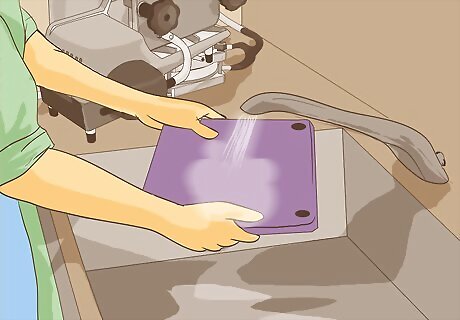
Clean your system. Wash it with water and sulfite solution. Rinse with water once more after cleaning.















Comments
0 comment